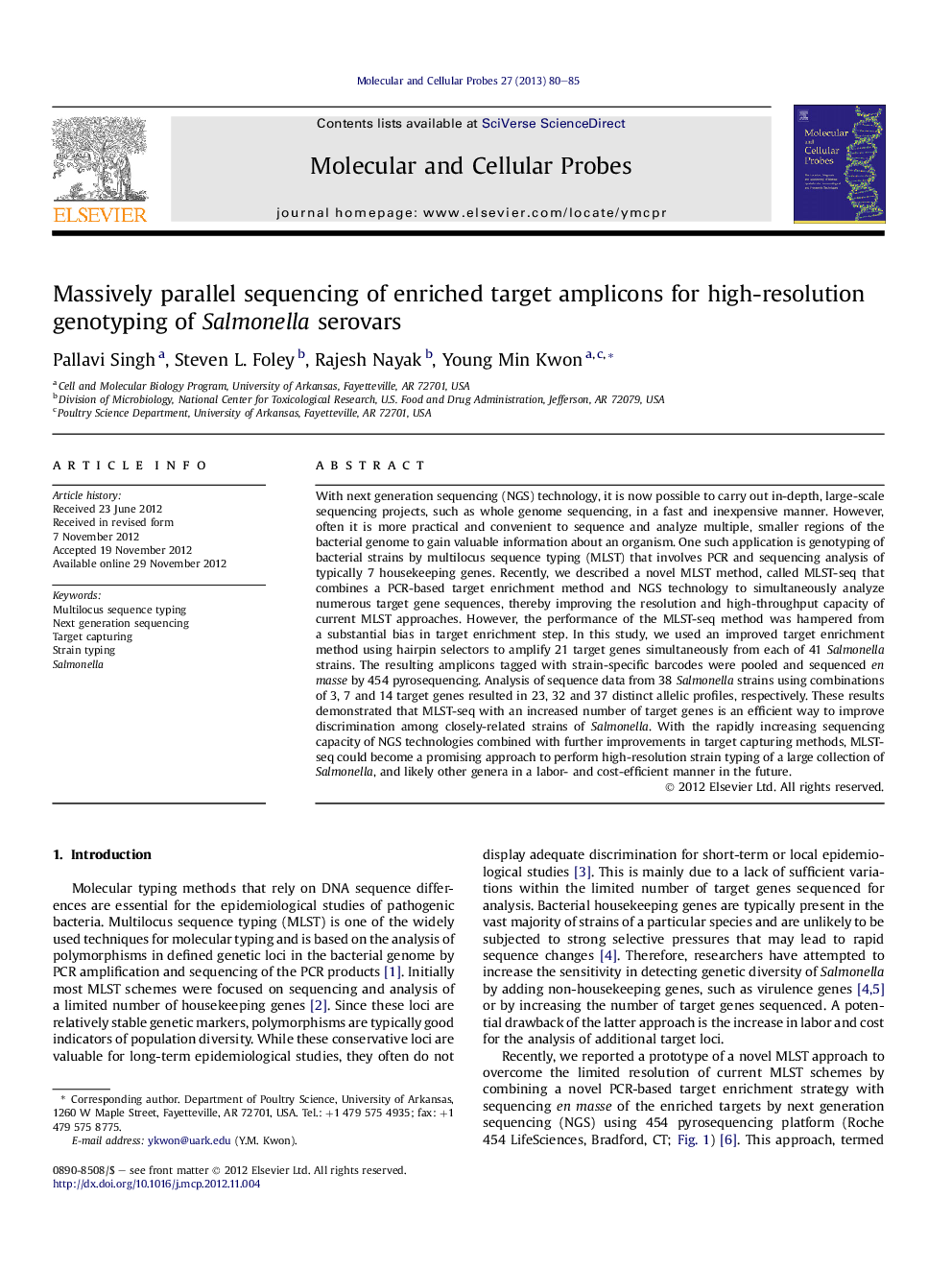| کد مقاله | کد نشریه | سال انتشار | مقاله انگلیسی | نسخه تمام متن |
|---|---|---|---|---|
| 2199741 | 1099615 | 2013 | 6 صفحه PDF | دانلود رایگان |

With next generation sequencing (NGS) technology, it is now possible to carry out in-depth, large-scale sequencing projects, such as whole genome sequencing, in a fast and inexpensive manner. However, often it is more practical and convenient to sequence and analyze multiple, smaller regions of the bacterial genome to gain valuable information about an organism. One such application is genotyping of bacterial strains by multilocus sequence typing (MLST) that involves PCR and sequencing analysis of typically 7 housekeeping genes. Recently, we described a novel MLST method, called MLST-seq that combines a PCR-based target enrichment method and NGS technology to simultaneously analyze numerous target gene sequences, thereby improving the resolution and high-throughput capacity of current MLST approaches. However, the performance of the MLST-seq method was hampered from a substantial bias in target enrichment step. In this study, we used an improved target enrichment method using hairpin selectors to amplify 21 target genes simultaneously from each of 41 Salmonella strains. The resulting amplicons tagged with strain-specific barcodes were pooled and sequenced en masse by 454 pyrosequencing. Analysis of sequence data from 38 Salmonella strains using combinations of 3, 7 and 14 target genes resulted in 23, 32 and 37 distinct allelic profiles, respectively. These results demonstrated that MLST-seq with an increased number of target genes is an efficient way to improve discrimination among closely-related strains of Salmonella. With the rapidly increasing sequencing capacity of NGS technologies combined with further improvements in target capturing methods, MLST-seq could become a promising approach to perform high-resolution strain typing of a large collection of Salmonella, and likely other genera in a labor- and cost-efficient manner in the future.
Journal: Molecular and Cellular Probes - Volume 27, Issue 2, April 2013, Pages 80–85